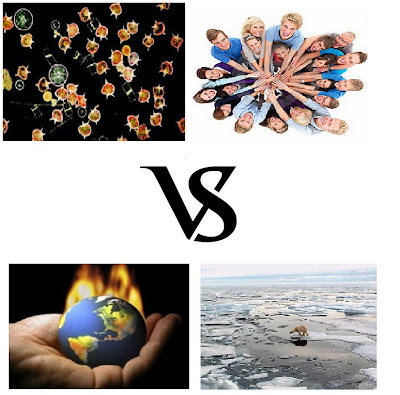Link To Article:


INTRODUCTION
For years, scientists have been extremely fascinated by the genetic modification of organisms. The boundless potential of the current discoveries in genetic engineering already have and continue to present much promise in the further progession of our world's evolution. While genetic engineering has already affected society in many positive ways through breakthroughs in food, medicine, as well as the cloning and fortification of certain organisms (mainly certain animals and crops); scientists have also greatly pondered the possibility of genetically engineering humans, specifically while they are still in the womb. With many questions posed in regards to the benefits of "designing" babies as well as the many contradictions raised due to several moral and ethical issues, geneticists still remain at a crossroads in regards to this matter. There are many aspects that need to be considered in order to truly discover what this biological endeavour could mean for the well being of society's future.
OVERVIEW OF ARTICLE
The article on actionbioscience.org had given an in-depth look on the debatable topic of “designer babies” and offered much insight on the many views associated with this intriguing advancement in genetics. First and foremost, the article mentions the exact definition of a designer baby that according to the Oxford Dictionary is “a baby whose genetic makeup has been artificially selected by genetic engineering combined with in vitro fertilization to ensure the presence or absence of particular genes or characteristics.” The article then goes on to explain some of the basic procedures of human genetic engineering such as In Vitro Fertilization (IVF) and Preimplantation Genetic Diagnosis (PGD), both in which a human embryos DNA is modified and then reintroduced into a womb. Specifically in PGD, an embryo is grown to an eight cell stage and then eventually 2 cells are removed and checked for genetic variants associated with disease. If a diseased embryo is diagnosed, it is eliminated before it can continue to grow any further.
The article explains on numerous accounts how it is clear that the genetic screening and modification of an embryo can offer the potential to be an effective and preventive therapy against disease and biological defects, for example; the replacement of genes linked with heart disease or asthma (Designer Babies: Ethical Considerations). Using theories of genetic modification on plants and medicines, the article also retells of a successful experiment conducted by Princeton University on the genes of animals, specifically mice. Adding a copy of a gene NR2B, a gene known to play a role on the mice’s brain; scientists recorded that the mice had seemed to learn faster and retained information much longer than regular mice. As one can see, the possibilities of genetic therapy on human embryos could most likely improve certain characteristics ranging from physical appearance, intelligence, strength, or athleticism within our own species.
With the many positive aspects that come with designer babies however, there are also many risks that must be addressed. Human genetic engineering procedures are extremely expensive and could also pose many dangers through the alteration of an embryo’s natural development. Many genes have been acknowledged to have more than one effect on an organism, therefore if a gene is altered it could possibly have a negative side effect, for example; if genetic modifications are made to enhance the powers of learning per say, the organism would possibly have a greater sensitivity to pain due to the delicate changes made to its developing nervous system (Designer Babies: Ethical Considerations). It is also believed that the removal of one to two cells from an eight cell embryo during PGD procedures could possibly have a negative effect on the normal regulation of cells. Some argue however that embryo cells are totipotent, meaning that PGD would have no effect on the regular formulation of cells of the human body.
Besides the possible risks mentioned above, there are also several moral and ethical issues discussed in the article. One issue deals with the fine line between using gene alteration technologies to prevent biological problems in babies and using them to basically just enhance babies to become “posthuman” or “unnatural” beings. The concept of eugenics had also been compared to designing babies due to the unnatural improvement of the babies into a new race or breed (a famous concept during WWII among bigoted Nazis). Another ethical issue that was brought up in the article was that designing babies could lead to the parental preference of an enhanced child, in which a child is immediately stripped of their fundamental rights right from the womb due to parents encouraging the alteration of their very being in order to suit their own interests. In order words, a parent designing a child could change their strengths, limitations, interests, appearance, and possible future ambitions.
Accuracy
Credibility
I found that the main article used in this bio-lit had been extremely credible due to the fact that its author Nicholas Agar, Ph.D is affliliated with the American Institute of Biological Sciences. The claims made in this article had also been supported by other reputable scientific sources such as Scientific American and Wired Science.
Bias
While my article did outline both the pros and cons of designing babies, I definitely noticed how the moral and ethical considerations had greatly outweighed the positive potential of this genetic endeavour. After reading the background information of the article`s author; I had realized how it had been extremely biased it had been due to Dr. Agar`s main research interests being the ethics of new genetics, as well as personal identity, environmental ethics, philosophy, as well as topics related to eugenics and the value of life.
CONCLUSION AND COMMENTARY
After thoroughly examining the exciting topic of designer babies, I found that its potential in our society to be quite thought-provoking and awe-inspiring. Imagine if the world's next generation of humans were to be somewhat more "perfect" in terms of both appearances and individual capabilities. Imagine a world where everyone could be "beautiful", "handsome", "tall", "smart", and everything else that a human should be.
While a future like the one mentioned above would sound like the utopia that us humans have been searching endlessly for, one can also understand that many great risks, costs, and negative effects that gene altering technologies can pose on society. With the entire concept of "designing babies" still being completely experimental, I believe that our world still cannot afford to take risks that could further endanger the lives of potential humans and the mothers who carry them, taking the role of "God" by changing one's supposed imperfections, and possibly even creating an even more secluding society which encourages the lack of diversity and promotes prejudice against those who weren't designed to be "perfect". In my opinion, I believe that "designer babies" shouldn't be promoted for cosmetic or enhancement applications, but rather for therapeutic methods against inherited diseases and genetic defects. Hopefully, the advancement of genetic technologies will allow future generations of humans to be "designed" as much more healthier than how we are now.
WORKS CITED
Agar, Nicholas. "Designer Babies: Ethical Considerations (ActionBioscience)." ActionBioscience - Promoting Bioscience Literacy. American Institute of Biological Sciences, Apr. 2006. Web. 05 Feb. 2012. http://www.actionbioscience.org/biotech/agar.html.
Keim, Brandon. "Designer Babies: A Right to Choose? | Wired Science | Wired.com." Wired.com. Wired, 9 Mar. 2009. Web. 05 Feb. 2012. http://www.wired.com/wiredscience/2009/03/designerdebate/.
"The Need to Regulate "Designer Babies": Scientific American." Science News, Articles and Information | Scientific American. Scientific American, 4 May 2009. Web. 05 Feb. 2012. http://www.scientificamerican.com/article.cfm?id=regulate-designer-babies.






